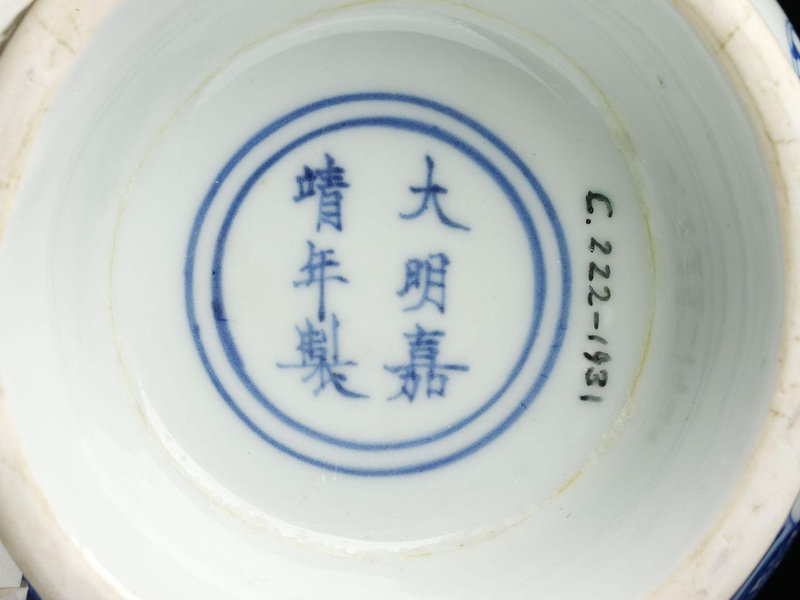The Peixoto Ewer, Ming dynasty, Jiajing mark and period (1522–1566)
The Peixoto Ewer, Ming dynasty, Jiajing mark and period (1522–1566), China, Jingdezhen. Porcelain painted in underglaze blue, with engraved silver cover and spout. Width: 23cm; Height: 33cm; Diameter: 12.7cm; Diameter: 21.5cm. Gulland Bequest, C.222-1931 ![]() Victoria and Albert Museum, London.
Victoria and Albert Museum, London.
This ewer is one of the earliest examples of Chinese porcelain bearing European armorial devices. The coat of arms on this ewer is probably that of the Portuguese family of Peixoto, attributed to Antonio Peixoto, son of Lopo Peixoto who had patent of the arms in 1511. Antonio Peixoto, a navigator and merchant, embarked on a trading mission to China together with his business partners, Antonio da Mota and Francisco Zeimoto. Sailing around the China coast in a junk laden with hides and other goods they were refused entry to the port of Canton (now Guangzhou) in 1542. They continued their journey and began to trade in Quanzhou and along the southern coast of China. Between 1522 and 1577 an imperial Chinese edict prevented trade relations with foreigners however during the 1540s a clandestine trade was flourishing. He probably bought this ewer during that trip and had it mounted in Persia on the return journey. This seems likely because the silver mounts were made at about the same time as the porcelain and were probably added as part of a repair. The cross pattern on the silver lid replicates the blue triangles and medallions around the neck.

/https%3A%2F%2Fprofilepics.canalblog.com%2Fprofilepics%2F1%2F0%2F100183.jpg)
/https%3A%2F%2Fstorage.canalblog.com%2F03%2F02%2F119589%2F96711876_o.jpg)
/https%3A%2F%2Fstorage.canalblog.com%2F11%2F31%2F119589%2F94773502_o.jpg)
/https%3A%2F%2Fstorage.canalblog.com%2F20%2F83%2F119589%2F94772815_o.jpg)
/https%3A%2F%2Fstorage.canalblog.com%2F26%2F72%2F119589%2F75604929_o.jpg)
/https%3A%2F%2Fstorage.canalblog.com%2F59%2F60%2F119589%2F26458628_o.jpg)




/image%2F1371349%2F20240426%2Fob_9bd94f_440340918-1658263111610368-58180761217.jpg)
/image%2F1371349%2F20240426%2Fob_844371_440162278-1658267648276581-39734064969.jpg)
/image%2F1371349%2F20240425%2Fob_78c699_440320998-1657454638357882-17494889713.jpg)
/image%2F1371349%2F20240421%2Fob_1dddd2_438878301-1654314112005268-81048289869.jpg)